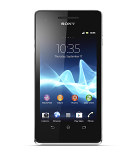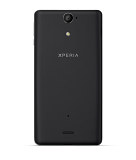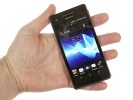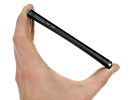 Introduction
Introduction
 It won't be long before those full-HD five-inchers start stealing the
show and the older Xperia generation should be preparing for life in
their shadow. It doesn't mean though that the Xperia V cannot hope for a
good time.
It won't be long before those full-HD five-inchers start stealing the
show and the older Xperia generation should be preparing for life in
their shadow. It doesn't mean though that the Xperia V cannot hope for a
good time.We don't see why a phone with dual-core Krait and an LTE connectivity shouldn't enjoy life in the midrange. OK, the upper midrange - but the Xperia V isn't easily caught off guard. Of course, people are not as easily impressed today as, say, a year ago. Yet, a select few phones are willing to offer 1080p videos and 13MP stills, while putting an HD touchscreen at your fingertips.
Sony Xperia V water-resistant phone
And there's more to the Xperia V than that. It's more durable than your average smartphone without looking like an army bot. You should've figured it by now, what we have here is a dust and water-resistant Xperia T with 4G connectivity and a tad smaller screen. Oh, well they needed to make sure the wetsuit would still fit the user.Key features
- Quad-band GSM /GPRS/EDGE support
- 3G with 42.2 Mbps HSDPA and 5.76 Mbps HSUPA
- LTE Cat3 DL 100 Mbps UL 50 Mbps
- 4.3" 16M-color capacitive LED-backlit Reality LCD touchscreen of 720p resolution (720 x 1280 pixels) with Sony Mobile BRAVIA engine 2; Scratch-resistant glass
- Android OS v4.0.4 Ice Cream Sandwich, Jelly Bean coming up
- IP57 certified for dust and water resistance, up to 1 meter immersion for 30 minutes
- Dual-core 1.5 GHz Krait CPU, 1 GB RAM, Adreno 225 GPU, Qualcomm Snapdragon MSM8960 chipset
- 13 MP autofocus camera with LED flash and geotagging, Superior Auto mode
- 1080p video recording @ 30fps with continuous autofocus and stereo sound
- VGA front-facing camera
- Wi-Fi a/b/g/n with DLNA, Wi-Fi Direct and hotspot
- GPS with A-GPS, GLONASS
- 8GB of built-in storage, microSD card slot
- microUSB port with MHL and USB-host support
- Stereo Bluetooth v4.0
- Standard 3.5 mm audio jack
- Stereo FM radio with RDS
- Voice dialing
- Deep Facebook integration
- PlayStation Certified, access to the PS Store
- Accelerometer and proximity sensor
- NFC connectivity
Main disadvantages
- No JellyBean at launch
- Relatively modest battery capacity
- Video recording fails to impress
- No hardware shutter key
- Comes across as overpriced
A bit of a vicious circle there, not too good for Sony, but hopefully not for long. Hopefully, the Xperia V should be getting the Jelly Bean treatment as early as February.


The Sony Xperia V at HQ
Elsewhere, the Sony Xperia V makes a pretty strong case for itself. The HD display is looking good, the camera on the back is ready to serve 13MP stills, there's LTE and the dual-core Krait is humming along. And the Xperia V is ready to take calls at the poolside or in the shower.
Sounds like an exciting package, and good-looking too.
more details continue as shortly..keep on touch with me
































